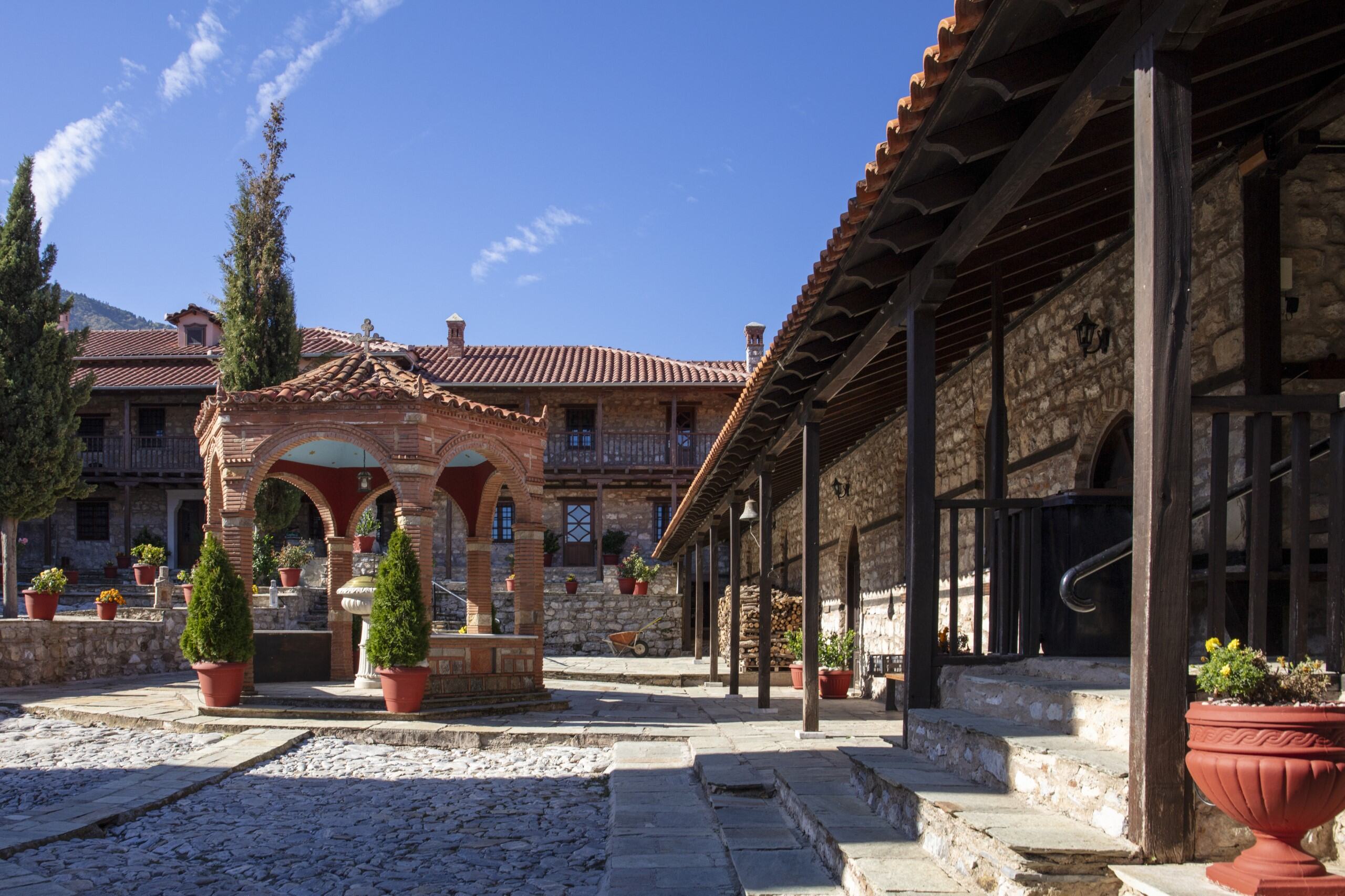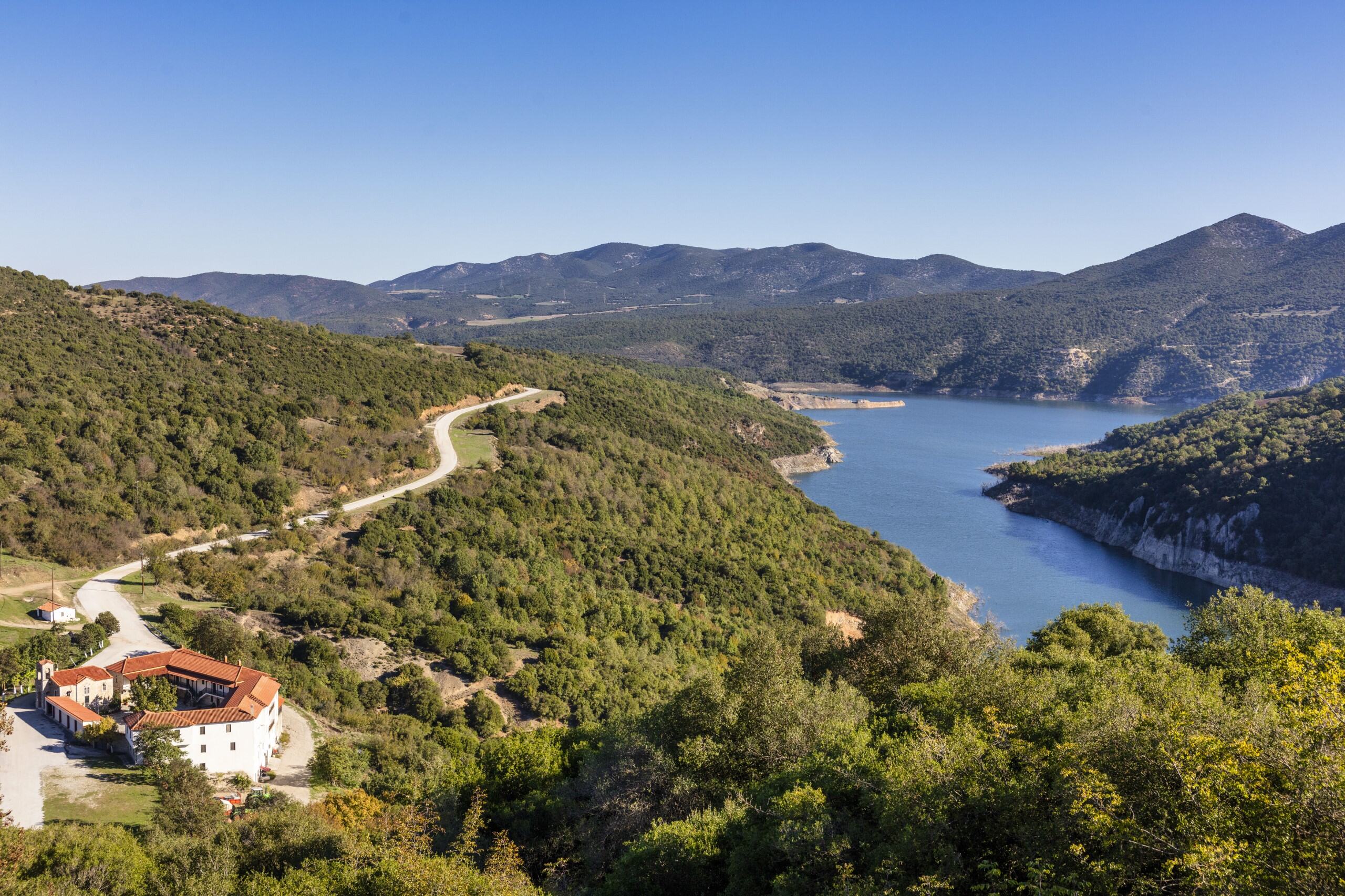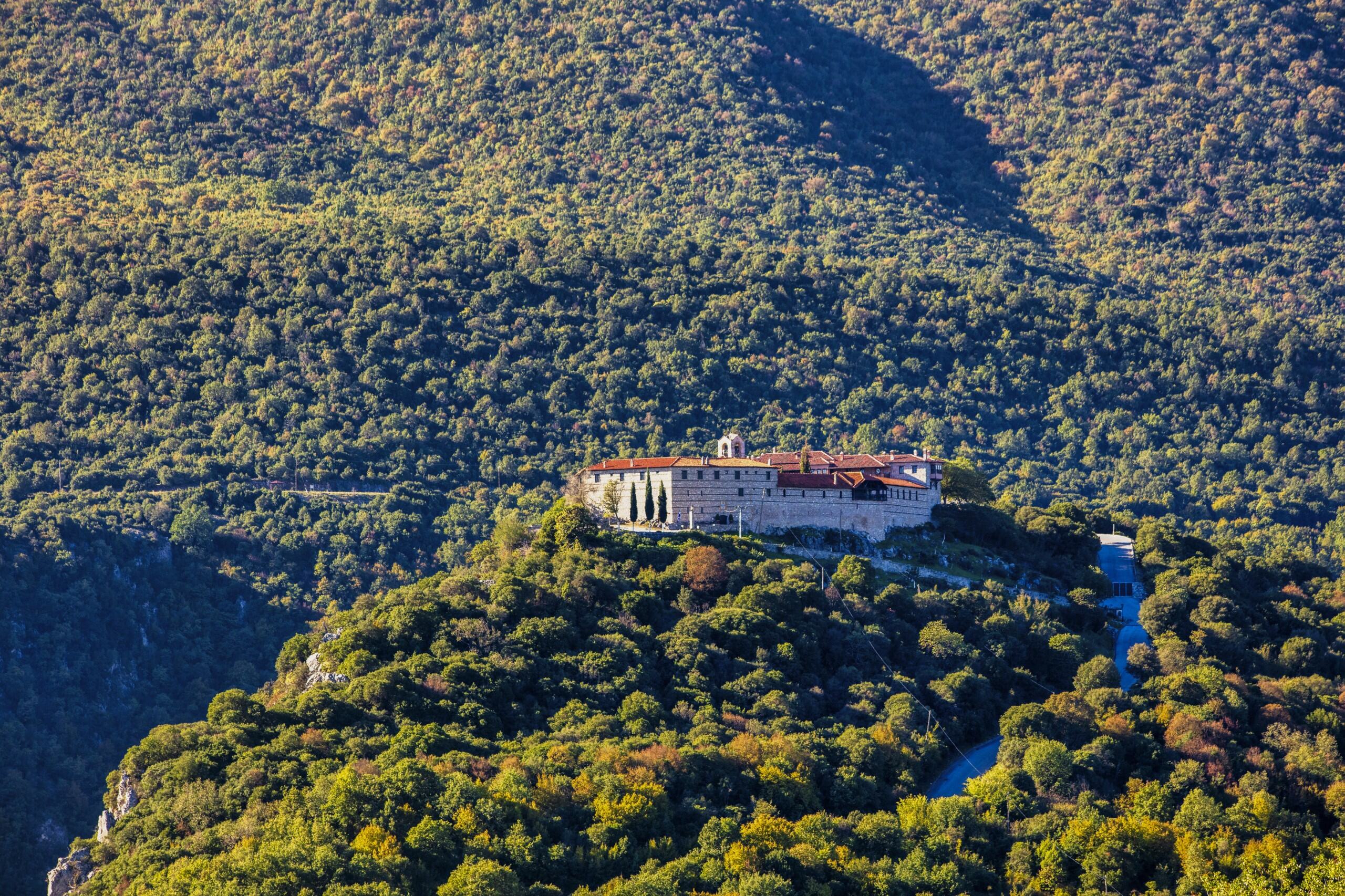Holy Monastery of Osios Nikanoras in Zavorda

Holy Monastery of Zavorda: A Beacon of Faith, History, and Spiritual Heritage
The Holy Monastery of Zavorda, dedicated to the Transfiguration of the Savior, is one of the most important monastic complexes in Greece. It was founded in the 16th century by Osios Nikanor, who, according to tradition, was born in Thessaloniki and first lived as an ascetic in a cave near the present monastery. After a divine vision, he climbed Mount Kallistratos, where he discovered a buried icon of Christ and decided to establish the monastery.
The construction of the monastery was completed between 1532 and 1543, forming an impressive complex with grand buildings, towers, and chapels. It was initially under the jurisdiction of the Archdiocese of Ohrid and later the Ecumenical Patriarchate. The main church, built in Athonite style, features remarkable frescoes by artists such as Frangos Katelanos (1547) and Manuel (1869), and is known for its dome supported by four square piers. Two chapels stand out, dedicated to Agios Athanasios and Agios Ioannis Chrysostomos, where the tomb of Osios Nikanor is located.
The monastery houses many sacred relics, including those of Osios Nikanor, Agios Ioannis Chrysostomos, and Agios Dimitrios, as well as treasures like a wood-carved iconostasis from 1890 and a pilgrimage stand from 1773. Sadly, many valuable manuscripts were lost during the occupation and the civil war.
During the Ottoman period, the monastery experienced significant economic and spiritual growth, owning over 60,000 acres of land and thousands of livestock. It became an important spiritual center, supporting schools and theological education. Two metropolitans, Parthenios and Nikephoros, came from the monastery.
The monastery played an active role in national struggles. Its abbot was initiated into the Filiki Eteria in 1821 by Nikolaos Kasomoulis. During the Macedonian Struggle, it sheltered fighters and used improvised routes to transport weapons across the Aliakmon River.
Today, the Monastery of Zavorda remains an important religious and historical center, preserving the memory of Osios Nikanor and its rich cultural heritage.
Information
Holy Monastery of Osios Nikanoras in Zavorda, Grevena, 51200
Phone: +302462025261
Closed from 13:00–17:00 and on Mondays. Entry is prohibited to women (male-only monastery).
Highlights
• The Katholikon. Built in Athonite style, with a dome supported by four piers. Features frescoes by Frangos Katelanos (1547) and later works (1869, 1889), and a gilded wood-carved iconostasis from 1890.
• Tomb of Osios Nikanor. Located in the chapel of Agios Ioannis Chrysostomos. A simple, humble tomb of deep spiritual significance.
• The Monastic Complex. Includes guesthouses, the Church of Agios Dimitrios, refectory, monk cells, crypts, and storage rooms.
• The cobbled uphill path leading to the Monastery Gate.
• Holy Relics and Sacred Objects.
• The Icon of Christ the Savior. Discovered by Osios Nikanor after his divine vision.
• Relics of Osios Nikanor, Agios Ioannis Chrysostomos, Agios Dimitrios, and other saints.
• A carved pilgrimage stand (1773) and an ivory-inlaid ciborium.
• Frescoes in the Narthex (1835). Depict the life and miracles of Osios Nikanor, with both historical and artistic value.
• The Monastery Crypt. Once held 206 manuscripts, including a lexicon by Patriarch Fotios. Many were destroyed during the Occupation and Civil War.
• The Bell Tower (1873). 20 meters high, a key architectural feature of the monastery.
• The "Hermitage" of Osios Nikanor. A cave beneath the monastery where the saint first lived. It contains frescoes from 1793 dedicated to Agios Georgios.




